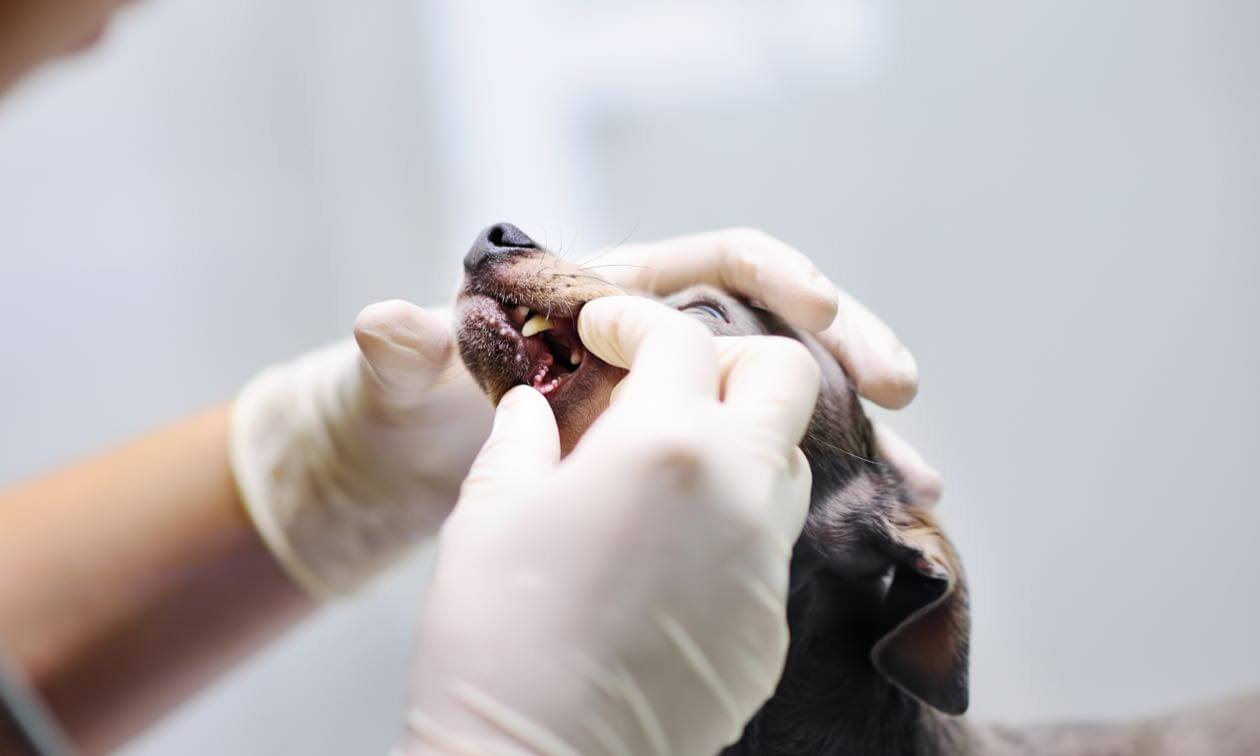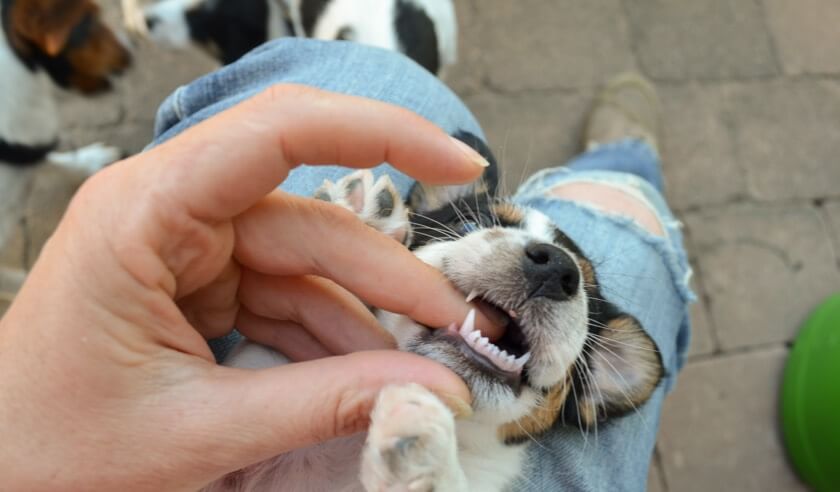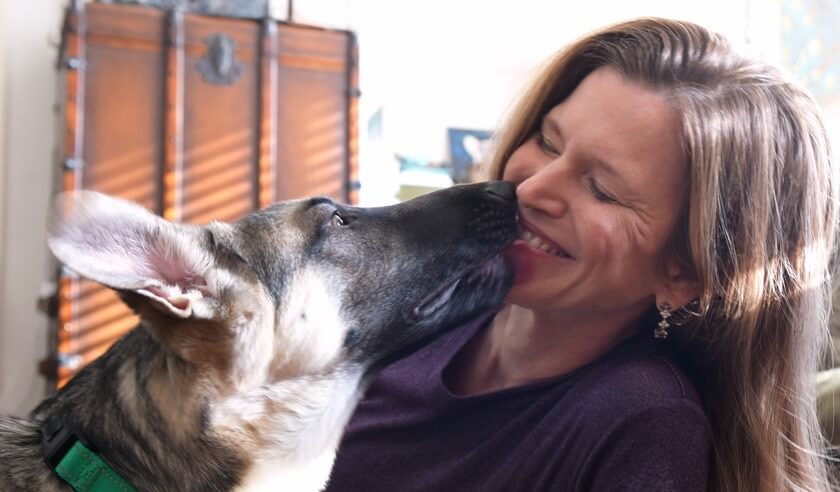Are you regularly checking your dog's teeth? If not, you probably should. It might seem like those teeth are made of steel, but they're actually quite susceptible to breaking. It's not just a cosmetic issue that makes your dog's smile look a little goofy — a broken tooth can be painful and serious. It's important to do regular checks of your dog's teeth and familiarize yourself with the signs that something might be wrong.
The Risks of Leaving Your Dog's Broken Teeth Untreated
Fractured teeth can pose significant problems for your dog. If the dentin (the middle, bony tissue layer of the tooth) is exposed, the tooth becomes sensitive to temperature and pressure. This can cause your dog to avoid drinking and eating.
When teeth are broken and the pulp (nerve) is exposed, bacteria can enter the pulp and move down to the root causing an infection of the tooth. If the bacteria get past the bottom of the tooth, they can then infect the jawbone. Once in this location, even with antibiotics, your dog's immune system cannot get rid of the infection. This leads to oral pain and the spread of infection to other parts of the body.
What Causes Broken Teeth in Dogs?
Unfortunately, broken teeth are common for dogs. There are several different ways your dog can get a broken tooth. These include:
- Chewing on hard toys, bones, or chews
- Chewing on rocks or sticks
- Chewing on a crate
- Getting hit in the mouth by a toy or chew
- Getting hit by a car
- Falling from a height
Any tooth can be broken, but the two most common are the canines (fangs) and the upper fourth premolar (the larger, pointy tooth farther back in the mouth).
Signs Your Dog May Have a Broken Tooth
Despite having suffered a fractured tooth, many dogs show no signs of oral pain even though they're likely feeling it. That's why routine oral cavity examinations are critical to identify any issues. The sooner the issue is found, the easier the treatment process is.
Knowing how to recognize a fractured tooth during an oral exam is important. This isn't just for exams at your veterinarian's office — looking at your dog's teeth at home is important, too.
A fracture can be as simple as a chip. A more severe fracture will expose the pulp (nerve), where you may see a red or black spot on the tooth.
Since your dog may hide their pain, other signs indicating they may have a broken tooth include:
- Avoiding eating or chewing
- Chewing on one side
- Messy eating or food falling from their mouth when eating
- Excessive drooling
- Pawing or rubbing their mouth
- Facial swelling
- Enlarged lymph nodes, feeling like lumps under the jaw or on the underside of the neck
- Lethargy
- Behavioral changes
- Reactions to petting around the face or head
- Refusing to play with chews or toys
Any time you suspect a fracture of your dog's tooth or note any of the above symptoms have your dog immediately evaluated by their veterinarian.
Treatment Options If Your Dog Breaks a Tooth
The treatment plan for a fractured tooth is determined by several different factors. These include:
- Which tooth is affected
- The extent and severity of the fracture
- The lifestyle of the dog
There are many new dental treatment options for dogs. If no dentin is exposed, a chipped tooth may be left untouched and monitored for any changes. Surgery or extractions may be required when dentin is exposed (or when the condition is severe).
When the nerve is exposed, two forms of treatment are available to help try to keep pain-free use of the tooth.
- Root Canal
If an x-ray confirms that the root and surrounding bone are intact, the diseased tissue is removed, and the canal is cleaned, disinfected, and filled. This helps prevent bacterial contamination in the future and saves the tooth. Following the root canal, a crown or cap may be placed over the tooth. Crown placement is determined by the amount of missing dental crown and a dog’s lifestyle. You will see this done in military and working police dogs since their teeth are essential to their job. - Tooth Extraction
In many cases, removing the tooth is the best and least expensive option. However, if the tooth is healthy other than the fracture, especially if it’s one of the canine or chewing teeth, veterinarians try to avoid removal. If it’s an incisor (the small teeth in the front of the mouth), it’s usually extracted.
For dogs under 18 months of age with a recently fractured tooth, vital pulp therapy may be an option. The goal of this treatment is to keep the tooth alive. The procedure involves removing a layer of pulp so surface bacteria and inflamed tissue can be removed. The newly exposed pulp is then covered in medicated dressing so it can heal. Then the dressing is topped with a dental composite that acts as a protective barrier. It’s important to remember that some of these cases require root canal therapy in the future.
If x-rays show no evidence of disease and the fracture is uncomplicated, the tooth may be treated with a bonded sealant application. A thin plastic coating is applied to the tooth as a shield to prevent sensitivity and infection and to create a smoother surface to limit plaque buildup.
How Can You Prevent Broken Teeth in Your Dog?
Since chewing on very hard objects is a major cause of broken teeth, most veterinary dentists recommend the "thumbnail test" for chew toys. If you can make a dent in the toy with your fingernail, it passes the "thumbnail test" and is soft enough for your dog to chew. Some items that fail the test include antlers, bones, hooves, and yak chews. It’s also good to eliminate any toys or chews that don’t bend easily.
Always select the correct-sized chew based on the size of your dog. Typically, larger chews are harder. Therefore, they are inappropriate for small dogs or puppies whose teeth can’t handle that degree of hardness.
A list of safe dog chews is available from the Veterinary Oral Health Council (VOHC). And look for the VOHC seal of approval on treats, diets, and other items to help determine if they are safe and effective.
ZPC-02409





